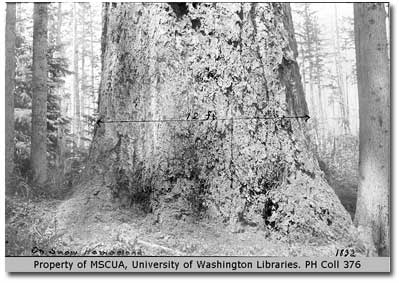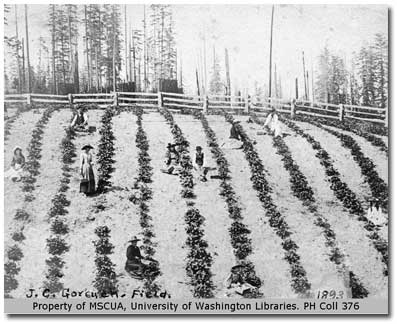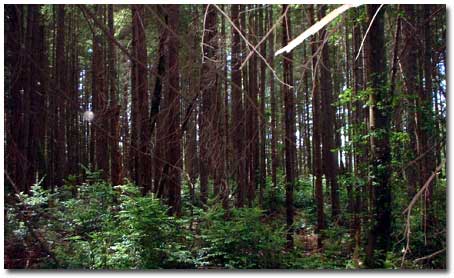Vashon Island’s original old growth forest, like much of the Northwest:
 Was a complex ecological community dominated by ancient, towering firs, hemlocks and cedars. In the shade of the sheltering canopy the forest floor was often open and populated with native orchids and rare flora, the ground damp and soft with fallen needles and decaying logs nourishing the soil. Younger and more open stands would be thick with undergrowth and seedlings of shade tolerant hemlock and cedar. In sunny clearings, alder, fireweed, salal, thimbleberry, and evergreen huckleberry grew thick. In much of the forest, snags and downed logs comprised up to half of the total biological material, and provided the foundation for a long succession of plant and wildlife communities. The deep forest, young stands, clearings and forest edges provided habitat for a remarkable assortment of insects, birds and animals.
Was a complex ecological community dominated by ancient, towering firs, hemlocks and cedars. In the shade of the sheltering canopy the forest floor was often open and populated with native orchids and rare flora, the ground damp and soft with fallen needles and decaying logs nourishing the soil. Younger and more open stands would be thick with undergrowth and seedlings of shade tolerant hemlock and cedar. In sunny clearings, alder, fireweed, salal, thimbleberry, and evergreen huckleberry grew thick. In much of the forest, snags and downed logs comprised up to half of the total biological material, and provided the foundation for a long succession of plant and wildlife communities. The deep forest, young stands, clearings and forest edges provided habitat for a remarkable assortment of insects, birds and animals.By the early 20th Century:
 Most of Vashon's old growth forest had been cleared, and farmland dominated the landscape until after WWII. Today about 15,000 acres, or 60% of the island, is re-forested and parceled amongst several thousand landowners.
Most of Vashon's old growth forest had been cleared, and farmland dominated the landscape until after WWII. Today about 15,000 acres, or 60% of the island, is re-forested and parceled amongst several thousand landowners.Most islanders want to protect these forests, and many believe the best thing they can do is leave them alone. In the past and in more rural areas this was often all that was necessary. However, while forests have evolved strategies over the millennia to recover from natural disturbances like fire, windstorms, and indigenous disease, it is a much greater challenge for them to return to the complexity and scale of old growth after such recent and widespread human disturbances as clearcutting, farming, urbanization, and the spread of alien invasive species. As a result of such unnatural disturbances, much of Vashon’s current forest cover is overcrowded with suppressed trees, becoming overrun with invasive plants, and lacks diverse wildlife habitat. In these forests, careful, on-going stewardship will help nature heal.
Why not leave forests alone?:
 Over-crowded stand of Douglas-firFond of their forests and outraged by the abuses of industrial forestry, many landowners are reluctant to cut trees at all or otherwise alter their forests. Others recognize that leaving a struggling forest alone may not be the best option for trees and wildlife, but are unfamiliar with alternative management methods and unsure how to proceed. Many underestimate or are unaware of the problems invasive plants can present. This is where Forest Stewards can help.
Over-crowded stand of Douglas-firFond of their forests and outraged by the abuses of industrial forestry, many landowners are reluctant to cut trees at all or otherwise alter their forests. Others recognize that leaving a struggling forest alone may not be the best option for trees and wildlife, but are unfamiliar with alternative management methods and unsure how to proceed. Many underestimate or are unaware of the problems invasive plants can present. This is where Forest Stewards can help.